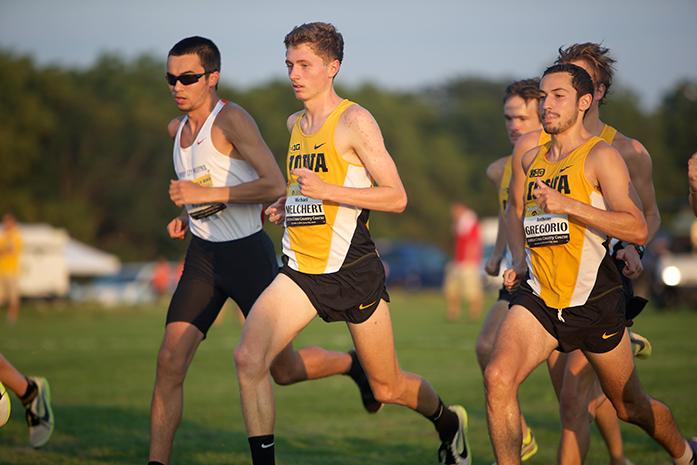Hawkeye cross-country wants to run in a pack.
By Adam Hensley
[email protected]
In almost every cross-country meet, runners strive to group together and create a pack, which allows them to run better.
Iowa’s head cross-country coach Layne Anderson says his team works on it daily.
“When we don’t run as a pack, we are just not as good,” he said.
Iowa struggled to run as a unit and keep up with the competition at the Notre Dame Invitational on Oct. 2. Michael Melchert led the Hawks, coming in at 61st. The next Hawkeyes, Ben Anderson and Anthony Gregorio, came in at 86th and 90th. Then the rest of the team followed, with Nate Ferree leading the pack at 132nd.
“We got behind a huge pack,” Melchert said. “We never really got together as a whole.”
Iowa’s scoring reflected that — the team finished 20th with 480 points, along with an average gap of 10 places between runners.
Being close together as a unit while keeping up with the competition helps in that area.
“If you have a bunch of guys finish near each other, that is huge for scoring,” Ben Anderson said.
For example, if one team has a runner placing first and the second runner at 50th, that is 51 points. If runners from one team stay as a unit and run together, such as having the top-two runners place 10th and 12th, that is 22 points — a much better score.
Compared with years past, Iowa does not have a runner who can consistently place in the top spots. Therefore, pack running is a larger focus than in other years.
“We don’t have, at this stage, a front runner, someone that is going to get sixth in the Big Ten like Kevin Lewis,” Layne Anderson said. “And for that reason, we have to do a better job staying together.”
Ben Anderson agreed about the need to improve pack running.
“We just have to commit to running with each other,” he said. “We do it in practice, and there is no way we should not be able to do it in a race.”
Aside from scoring, runners can benefit mentally.
“It keeps guys from falling off,” Layne Anderson said. “There’s some comfort in looking around, seeing your teammates. There’s some accountability that goes into that, less inclined to back off if your teammates are there.”
If a runner is determined to run a personal best time, pack running can be beneficial as well. Compared with running alone and trying to keep pace, a runner can join a group and have others to run with.
Melchert also believes that pack running is key to a successful meet.
“It’s way easier to run with a pack of guys than to do it by yourself; it encourages guys to go faster,” he said.
There are few downsides to running this way.
“It can be [a bad thing] if the pack is just not moving up as a whole,” Melchert said. “Other than that, the consensus remains that pack running is one of the most effective race strategies.”



